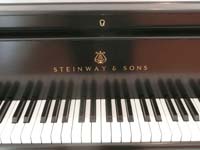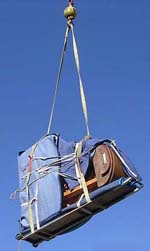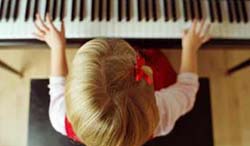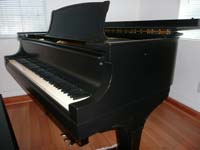 Acoustic Versus Digital:
Acoustic Versus Digital:
There are benefits to both acoustic and digital pianos. However, if the primary purpose is learning to play the piano, an acoustic piano is best. A digital piano has many features that are useful for other purposes such as working with music software, practicing with headphones, and playing a wide variety of sounds. But the piano action of an acoustic piano has nearly 100 parts for each key which provides a much higher level of performance. The subtleties of touch and pedaling enable much more expressive performance on an acoustic piano.
Upright Versus Grand:

An upright might be a good choice if space and budget are limited. However, a grand piano offers superior touch and tone. The vertical motion of hammers in a grand piano offers faster repetition than the horizontal hammer motion of an upright piano. Also, the length of the keys beyond the fall board is greater on a grand piano than on an upright offering better leverage when playing black keys and between black keys. Finally, the sound of a grand piano projects into the room, not into the wall. You may be surprised at how easy it is to place a baby grand piano since it looks good on all sides and can be placed in a corner.
New Versus Used:

If budget is unlimited, buying new can be a good choice. However, it comes with risks. A piano doesn’t reach its full potential until it has had a chance to season and become broken in. So, it is difficult to assess the quality of a new piano until years down the line. Also, if there are any major manufacturing defects in a piano, it will almost always evidence itself within the first few years. Used pianos can offer tremendous value but you must have knowledge in order to make the right buying decision. Factors include the quality of the manufacturer, as well as the history of the specific piano in question.
New: Handmade Versus Production Pianos:

Asian production pianos cost a fraction of hand-made American and European pianos. They are best bought new or nearly new because once they wear out, it doesn’t pay to restore them because they are so inexpensive to begin with. American pianos are a dying breed. We have gone from over 300 manufacturers prior to WWII to 3 companies producing pianos in the United States today. While everyone knows Steinway is a great piano, there are several other piano companies that produced pianos equal to Steinway which can be purchased for a fraction of the cost if you know what to look for. Because this is a vanishing commodity, there is lasting value in these instruments and it can be worthwhile restoring Mason & Hamlin, Knabe, Sohmer, Chickering, Baldwin and many other great American pianos.
Used: Rebuilt Versus Reconditioned:
 Unlike people, pianos don’t age unless acted upon by outside forces, namely environment and use. A piano that isn’t played very much and has spent its life in a stable environment in regards to temperature and humidity may only require reconditioning in order to achieve a high level of performance. This is true of some high quality pianos 50 or 75 years old! Other pianos much younger may require rebuilding which involves removal of the strings and plate, and complete restoration of the 10,000 parts throughout the instrument. While this is very costly, the high price of new hand-made pianos makes this investment worthwhile for the right instrument.
Unlike people, pianos don’t age unless acted upon by outside forces, namely environment and use. A piano that isn’t played very much and has spent its life in a stable environment in regards to temperature and humidity may only require reconditioning in order to achieve a high level of performance. This is true of some high quality pianos 50 or 75 years old! Other pianos much younger may require rebuilding which involves removal of the strings and plate, and complete restoration of the 10,000 parts throughout the instrument. While this is very costly, the high price of new hand-made pianos makes this investment worthwhile for the right instrument.
 Size Matters:
Size Matters:
With pianos, all things being equal, bigger is better. This is due to the longer strings and bigger sound board which offer enhanced tone. However, it is important to match the size of the piano to the room. A larger piano produces more volume. So you must assess the acoustics and purpose of the piano to determine what size is appropriate for the space.

 Think Long Term:
Think Long Term:
Unlike almost everything else you buy, you buy a piano only once if you make the right decision. This is because a piano can last a lifetime if it is properly cared for. So you should think beyond your current family situation and home and project far into the future when making a purchasing decision.

 Piano as Instrument and Furniture:
Piano as Instrument and Furniture:
While a piano is a musical instrument, it is also one of the most significant pieces of furniture you invest in. So, consider the look of the piano so that you are happy living with it. Black pianos are the most popular, offer the easiest resale, and also are most versatile. But you should ultimately get what you like to be happy.

 Intellect Versus Emotion:
Intellect Versus Emotion:
While it is important to make the right decision when getting a piano, ultimately it is about satisfying aesthetics. You must not over think it. If you feel an attachment to the sound and look of a piano, it is probably the right one to get. Because then you will want to play and hear the instrument. Educate yourself as to what to look for, but ultimately make the decision based upon what you love.






































